Stable isotopes
Type of resources
Topics
Keywords
Contact for the resource
Provided by
Years
Formats
Representation types
Update frequencies
Scale
-
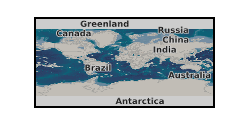
IDA272269 Methane and CO2 gas concentrations and stable isotope analyses of cutting samples from GGA05 and GGA08 boreholes of the Glasgow UKGEOS facility. Cutting samples were collected approximately every 3m depth in gas tight isojars by the BGS. Geochemical gas analyses was carried out at the Scottish Universities Environmental Research Centre (SUERC) and consisted of bulk concentration analysis using gas chromatography; followed by δ13CCH4, δ13CCO2, and δD stable isotope analyses on a methane combustion line (full methods attached). This data was collected to investigate the variability of gas fingerprints with depth within the Glasgow coal mine workings, and unmined Carboniferous coal measures. Samples and data are derived from the UK Geoenergy Observatories Programme funded by the UKRI Natural Environment Research Council and delivered by the British Geological Survey.
-
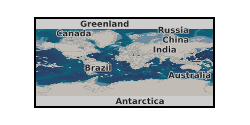
This dataset contains the low-resolution isotopic data (O & C) covering the last 1Ma, which is used to establish a more precise glacial-interglacial stratigraphy than the shipboard bio/paleomagneto stratigraphy for 2 NW Pacific Sites (IODP EXP350 1436C and 1437B) both were recovered at intermediate depths. The planktonic foraminifera census counts are used to assess the changes in surface water in the area affected by the Kuroshio Current. They are also used in concert with other sedimentological, micropaleontological or taphonomical evidences to estimate the changes in carbonate preservation at intermediate water depth in relation to changes in global ocean circulation during glacial interglacial cycles. Data report: Pleistocene planktonic foraminiferal oxygen and carbon stable isotope records and their use to improve the age model of Hole U1436C ores recovered east of the Aogashima Volcano, Maryline J. Vautravers
-
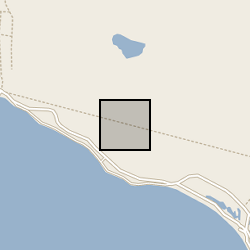
The dataset contains oxygen and carbon isotope measurements from multiple-shell samples of the ostracod Heterocypris punctata, from Core FP2 taken from Freshwater Pond, Barbuda. A chronology for the core is provided by radiocarbon dates. The data, which are further described in Burn et al. (2016) The Holocene, 26(8), 1237-47, provide a proxy for changing rainfall patterns for the period 2000-1555 CE.
-
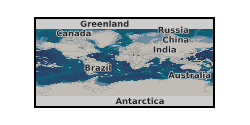
Groundwater and gas samples collected from sites in the Vale of Pickering and analysed for major gas concentrations, methane stable isotopes, and noble gas compositions.
-
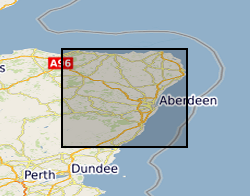
The database contains a range of geochemical data for metamorphosed limestones from the Dalradian of Scotland and Northern Ireland. The data include a) whole-rock geochemical analyses by XRF (X-Ray Fluorescence) for major oxides and a range of trace elements for several hundred samples, b) a number of whole-carbonate O (oxygen) and C (carbon) stable isotope and Sr (strontium) data, c) electron microprobe mineral data on carbonates and calc-silicate minerals and d) ion-probe O stable isotope and mineral trace element data for calcites in a small number of samples. The samples from which the data have been derived were collected from a wide range of outcrops within the Scottish and Irish Dalradian, mainly concentrated in the North East Grampian Highlands of Scotland. The data have been collected mainly to support the mapping and scientific work being undertaken in the Grampian Highlands by BGS since the early 1980s. The database includes some data from the literature. All samples are located by British National Grid coordinates to the nearest 10m or better. The isotope data were acquired as part of a PhD study by C W Thomas in the late 1990s. The database is not currently being added to, but is still being used in various studies. The combined data provide wide-ranging insights into marine chemistry contemporary with deposition of the limestones and the way in which this chemistry changed with time during the Neoproterozoic, and they elucidate subsequent effects of diagenesis and metamorphism and the outcrop and grain-scale. The data set is largely complete with regard to geochemical data, but still requires some editing to bring all fields up to date, particularly with regard to lithostratigraphical assignation. The data are currently held in MS Access tables and can conveniently be displayed via GIS or abstracted in tabular form and used in spreadsheets, statistical analysis and graphing software.
-
Noble gas and clumped methane data for samples from Anyue gas field, China (NERC Grant NE/T004452/1)
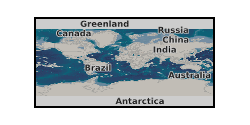
This dataset contains 6 tables covering all analytical data for samples collected from the Anyue gas field, central Sichuan Basin, China. Table 1 includes major gas species and stable carbon and hydrogen isotopes. Table 2 includes results for methane clumped isotopes and calculated methane formation temperatures of gas samples. Table 3 includes noble gas concentrations. Table 4 includes noble gas isotopic ratios. Table 5 includes parameters used in methane emission model and calculating total volume of methane emission. Table 6 includes gas composition and stable carbon and hydrogen isotope characteristics of major gases produced in the pyrolysis experiments (thermally equilibrated methane between 400~500 in theory) and working reference gas, and their methane clumped isotope values.
-

The dataset worksheet contains a list of core samples taken during IODP Exp 350 and foraminifera-based data for selected samples. The work was started with the aim of reconstructing palaeoproductivity changes (namely surface-to-deep carbon isotope gradients and U/Ca measurements) over tephra layers in order to test the ‘ash fertilisation hypothesis’. However, the work has been temporarily halted given the on-board volcanologists ongoing concerns that the ash layers in the selected cores have been reworked and therefore are not primary. Because of the induration and silicification of the core samples at quite shallow depths in the core, the other aim of the project (to reconstruct palaeoceanographic changes from 16-0 Ma) was not possible. The spreadsheet contains a full list of samples and a list of samples that have been examined and analysed. The data worksheet contains the no. of Globigerinoides ruber (with weight), Oridorsalis umbonatus, Uvigerina spp. and Cibicidoides spp. specimens for specific samples. For selected samples, stable oxygen and carbon isotopes are given and a graph of the carbon isotopes vs depth in core is presented.
-
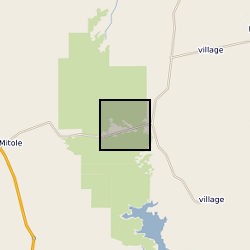
Data from Tanzania Drilling Project Core Site 14 B. Data spans the Paleocene Eocene Thermal Maximum ~56 million years ago. Data includes: bulk sediment geochemistry, BIT index and GDGT data, n-alkane d13C data, single specimen planktonic foraminifera stable isotope data and planktonic foraminifera count data. Geographic location 9°16'59.89"S, 39°30'45.04"E
-
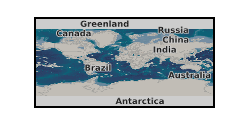
This dataset contains the nitrogen, oxygen, and lithophile element geochemistry of whole rock, and distribution coefficients, and stable isotope fractionation factors for biotite, orthoclase, and plagioclase mineral separates from the Loch Doon Zoned Pluton, Scotland. The samples were collected from the northern limb of the Loch Doon pluton and are petrologically classified as are granodiorites and granites which show geochemical evidence for being a cogenetic zoned pluton. The data were collected over a time period of 2019-2022. These data were collected to investigate elemental partitioning and stable isotope fractionation of nitrogen between biotite, plagioclase, and orthoclase relative to each other and to the system (whole rock) during magmatic differentiation. This project was curiosity-driven science, and the anticipated interest groups are assumed to be the wider research community via scholarship and analytical protocols. These data were collected by an international team of scientists as part of Dr Toby Boocock’s PhD project. The full list of contributors are shown below: Boocock, TJ., Stüeken, ES., König, R., Mikhail, S, The University of St Andrews, UK (performed analysis, acquired samples, interpreted data) Bybee, GM, The University of the Witwatersrand, South Africa (performed analysis) Boyce, AJ, Scottish Universities Environmental Research Centre, UK (performed analysis) Prytulak, J, Durham University, UK (interpreted data) Buisman, I, University of Cambridge, UK (performed analysis)
-

Major and trace element composition, and stable isotope data for whole-rock samples from alkaline rocks of the Chilwa Province. Samples collected between 2011-2021 in the Chilwa Alkaline Province, Malawi
 NERC Data Catalogue Service
NERC Data Catalogue Service